| Back to Back Issues Page |
 |
|
Bangkok Travelbug January 2016 Buffalo Conservation Village Suphanburi December 29, 2015 |
| Hello
Thai water buffalo The Asian domestic water buffalo or Bubalus bubalis has a long association with the farmer that dates back to more than a thousand years! The buffalo is the main beast of burden in the rice fields of Asia, as a plough animal, to thresh rice and to haul wagons for the transportation of people and cargo. The life of the Thai farmer in the old days virtually depended on the buffalo. The buffalo is revered by farmers who even have a ritual to pray to the spirit of the buffalo as a form of thanksgiving. 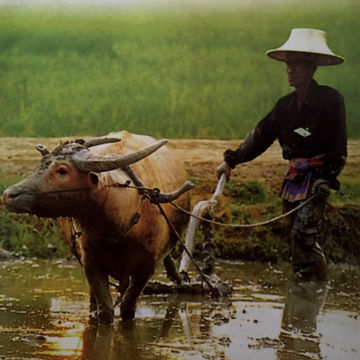
Hard at work ploughing For this reason, buffalos are not slaughtered for their meat. When the buffalo is too old to work, he is just left to spend the rest of his life on the farm. When the railway was built across America in the 19th C, the Native Americans called the train the “Iron Horse” . Similarly when the tractor was introduced to Thai farms, the Thai farmers called it the “Iron Buffalo”. With the mechanical plough adapted from the tractor, many farmers have stopped using buffalos. Not wanting to feed idle mouths, some farmers have released their buffalos to the wild. Other farmers may have kept their buffalos till the end of their lives. Whatever the case, through lack of employment, buffalos are in danger of extinction. For this reason, the Buffalo Conservation Village was established to preserve the species of an animal that has been the backbone of the Thai agricultural sector for centuries. 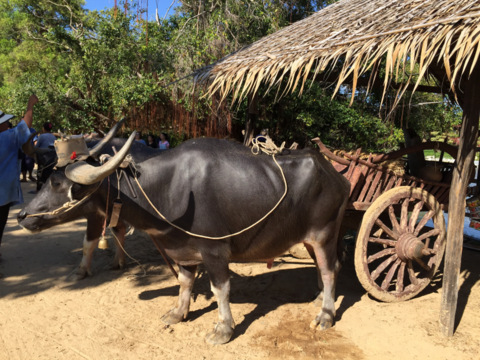
Main beast of burden on the farm Contents Buffalo Conservation Village The Buffalo Conservation Village is part of an effort to conserve the dwindling population of a traditional farm animal in Thailand. Buffalos are reared in this village in an attempt to breed and increase the population. 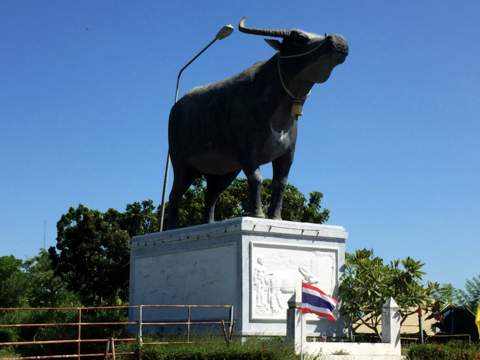
Monument to a noble beast 

In the buffalo shed The village is sustained by tourism and the buffalos are worked by giving displays of their traditional roles on a Thai farm. Buffalos are employed to plough rice fields, thresh rice by threading over the rice stalks repeatedly, haul cargo and serve as the family’s main means of transport. 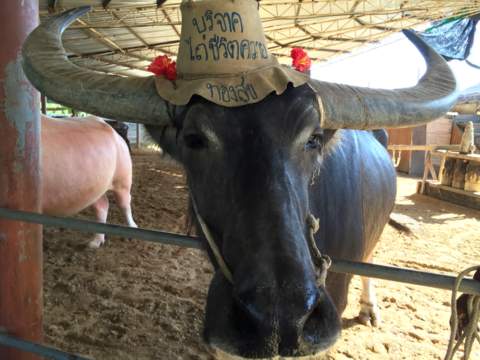
Support your friendly buffalo with a small tip in the hat 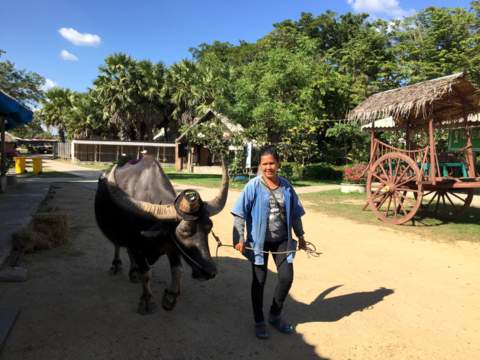
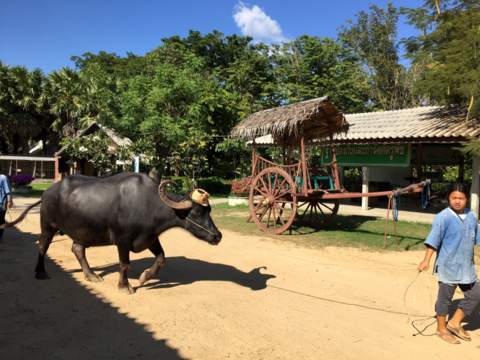
Getting the show on the road In the old days, when farmers had large quantities of rice to thresh, they used buffalos instead of manpower. The buffalo is tied to a vertical pole around which the harvested rice stalks are thrown. The buffalo goes round and round threading on the stalks to separate the rice grains from the stalks. For really large quantities more than one buffalo is used. 
Threshing rice There are several albinos are among the herd and a couple of pygmies as well. 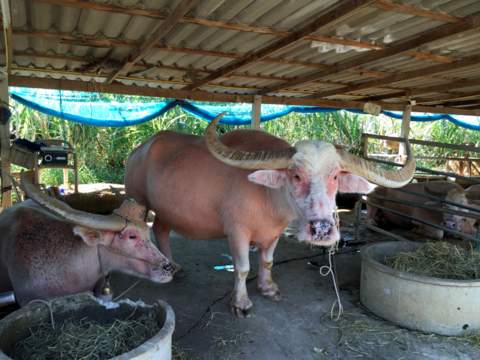
Albino buffalos 
Cute little fellow Contents Thai village This conservation project not only preserves the buffalo, it also preserves the traditional life on a Thai farm. A model traditional Thai village has been recreated to give visitors an idea of what life was like before. The village consist of wooden buildings with thatched roofs and raised on stilts. There’re three different buildings in the model village and the status of the family can be judged from the design of the building. The first, for instance, one is a simple single building usually for newly married couples just starting out in life. Structures consisting of two buildings joined by an open air veranda are for large extended families. The latter has a separate kitchen as well. These families are generally better off. 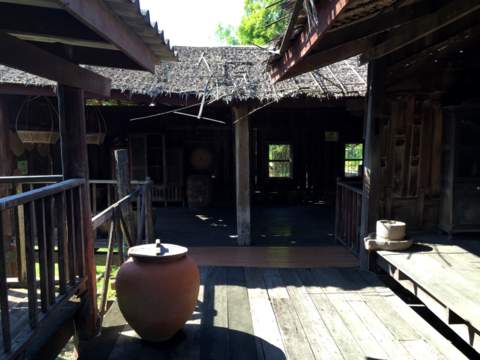
Twin buildings joined by an open veranda, the kitchen is at the far end This single building however has a separate bedroom, a hall and veranda. It belongs to a farmer who is established in rice farming and has the resources to invest in handicraft activities like weaving. 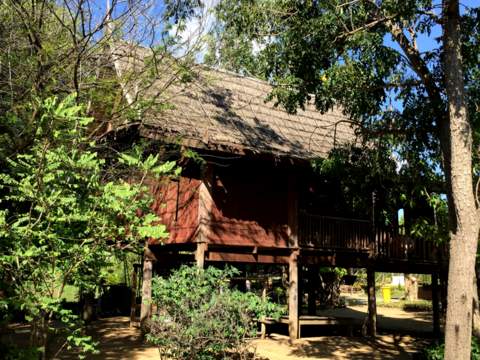
Single building The raised buildings are not only for protection against floods and wild animals, the space below is used for storing farming tools and for those who can afford it, for weaving and other activities when not engaged in planting or harvesting rice. 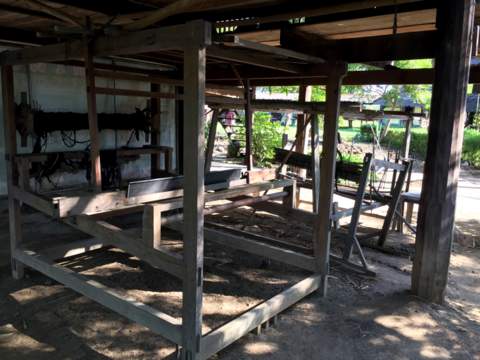
Weaving loom in the space under the house An important building is the barn for storing harvested rice (yung khao). This is where the farmer performs the ritual of calling on the spirit of the rice barn to bless his harvest. 
Rice barn to store the harvested rice Contents Baan Thai Resort The Baan Thai Resort is the third major attraction in the Buffalo Conservation Village. The resort consists of a number of traditional Thai houses that are rented out for accommodation and parties. The spaces below these buildings are ideal for hosting small reception parties. 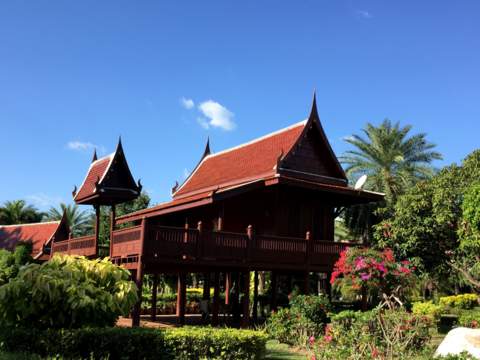
Houses meant for special functions This grand villa consisting of twin houses joined by an open veranda for dining would be ideal for a medium sized party with the entertainment and accommodation just a few steps apart. 
Twin houses joined by an open veranda 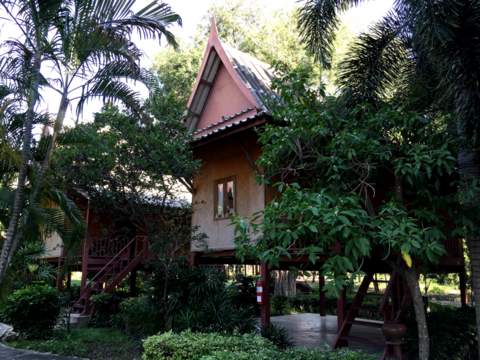
Houses for accommodation Seminar and conference facilities are also available in the main building. The resort is located by the lake in the northern section of the Buffalo Conservation Village in an area that’s surrounded by rice fields. 
Lake with the resort is to the right 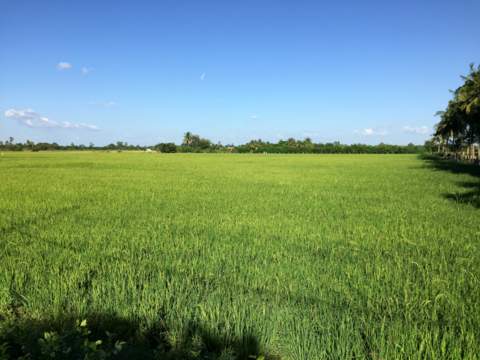
Rice field around the resort The grounds of this resort provide a rustic and peaceful atmosphere for a holiday, conference or seminar, a pleasant change from the usual resorts. Contents Map to the Buffalo Conservation Village Click on this link for a bigger map How to get there By car From Bangkok take the following route: Borommaratchachonnani Road – Highway 9 – Highway 340 (Bang Bua Thong – Suphanburi Road) – Suphanburi city – Highway 340 (Suphanburi – Chai Nat Road) Admission There are three separate prices; entrance, show and wagon ride. Visitors can choose to skip the show and wagon ride and just pay the entrance fee. There’s also a combined ticket for all three activities which is slightly cheaper than the sum of the separate prices. The Buffalo Conservation Village has a dual pricing policy for Thais and for foreigners. Thai Admission – adult 30 baht, children 20 baht Buffalo show – adult 20 baht, children 10 baht Buffalo wagon ride - adult 20 baht, children 10 baht Combined ticket for all three activities – adult 60 baht, children 40 baht Foreigners Admission – adult 150 baht, children 70 baht Buffalo show – adult 100 baht, children 70 baht Buffalo wagon ride - adult 100 baht, children 70 baht Combined ticket for all three activities – adult 320 baht, children 210 baht Opening times Every day from 0900 – 1800 hours Contact Information Address Buffalo Conservation Village 222/1 Suphanburi-Chainat Road Amphur Sri Prachan Suphanburi 72140 Thailand 0 3558 2592, 0 3558 1668 Website: Buffalo Village Contents Next month Suphanburi National Museum, Suphanburi If you enjoyed reading this e-zine, please forward it to a friend. If you received this from a friend and found it interesting, please subscribe at Bangkok Travelbug. What do you think of the Bangkok Travelbug? We love to hear from you What other subscribers have said Till next month then. Eric Lim Tour Bangkok Legacies Find us on Facebook If you are an independent traveller, here's a handy e-guide book, Tour Bangkok Legacies, which will help you along as you explore the streets of Bangkok and discover its old treasures. It's complete with historical descriptions, maps and detailed directions on how to get to these places. My Kindle e-book 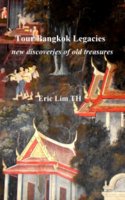
Copyright@2008-2016 Tour Bangkok Legacies All rights reserved |
| Back to Back Issues Page |